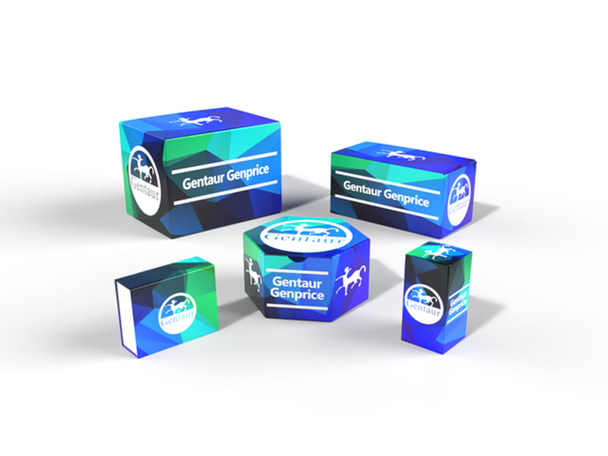Description
GluR2/3 Antibody | 50-219 | Gentaur UK, US & Europe Distribution
Host: Rabbit
Reactivity: Human, Mouse, Rat, Chicken, Zebrafish
Homology: N/A
Immunogen: Peptide corresponding to amino acid residues from the C-terminal region of rat GluR2/3
Research Area: Neuroscience
Tested Application: WB
Application: The antibody has been directly tested for reactivity in Western blots with human tissue. It is anticipated that the antibody will also react with chicken, human, mouse and zebra fish based on the fact that these species have 100% homology with the amino acid sequence used as antigen.
Specificiy: N/A
Positive Control 1: N/A
Positive Control 2: N/A
Positive Control 3: N/A
Positive Control 4: N/A
Positive Control 5: N/A
Positive Control 6: N/A
Molecular Weight: 100
Validation: N/A
Isoform: N/A
Purification: Affinity Purified
Clonality: Polyclonal
Clone: N/A
Isotype: N/A
Conjugate: Unconjugated
Physical State: Liquid
Buffer: N/A
Concentration: N/A
Storage Condition: GluR2/3 antibody can be stored at -20˚C and is stable at -20˚C for at least 1 year.
Alternate Name: N/A
User Note: Optimal dilutions for each application to be determined by the researcher.
BACKGROUND: The ion channels activated by glutamate are typically divided into two classes. Those that are sensitive to N-methyl-D-aspartate (NMDA) are designated NMDA receptors (NMDAR) while those activated by alpha-amino-3-hydroxy-5-methyl-4-isoxalone propionic acid (AMPA) are known as AMPA receptors (AMPAR) . The AMPAR are comprised of four distinct Glutamate Receptor Subunits designated (GluR1-4) and they play key roles in virtually all excitatory neurotransmission in the brain (Keinänen et al., 1990;Hollmann and Heinemann, 1994) . The GluR2 subunit is widely expressed throughout the nervous system where it is thought to play key roles in synaptic plasticity and learning and memory (Duprat et al., 2003; Seidenman et al., 2003; Chung et al., 2003; Yan et al., 2002) .






